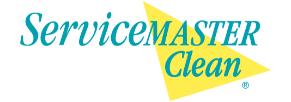It’s a great feeling to finally hear your doctor say “you can go home today,” after an extended hospital stay. However, there is a lot that goes on behind the scenes to ensure that the facility can care for the next patient. When a patient is discharged from a mental health facility, terminal cleaning must take place.
What is Terminal Cleaning?
Terminal cleaning procedures are used in healthcare environments to control the spread of infections. Terminal disinfection is critical to prevent the spread of infectious disease. Terminal cleaning completely sanitizes the space as a precautionary measure to ensure the potential for harmful bacteria and microbes are not transferred to other patients. For terminal healthcare cleaning, the following step-by-step process should be followed.
Cleaning/Disinfecting Due to a Body Fluid Spill
- Post Cautionary Signage: a sign must be posted on the outside of the door that says, “Please do not enter. Decontamination cleaning taking place.” Nurses or environmental services will take care of the sign and any floor triangles (“wet surface precautions”).
- Minimum of Two Cleaners Working: If possible, utilize two cleaners. One stays inside and wears full decontamination personal protective equipment (dirty cleaner). The other remains outside (clean) to be of assistance to the “dirty” cleaner.
- Clean Dirt and Debris: after following proper procedure to discard any removable and disposable equipment or other devices that were contaminated with a significant amount of body fluid, continue cleaning all visible dirt and debris and discard in red bags.
- Disinfecting: begin disinfecting with Sani-6. What is important is that the disinfecting product is appropriate for the killing of the most known or suspected pathogen. Sani 6 is a three percent sodium hypochlorite solution effective for these purposes. The area should be disinfected with Sani 6 using a unidirectional wiping and mopping technique. Charge the mop once. Do not replace in a bucket of solution. The cleaner may pour additional disinfecting solution if needed, but do not dip the mop in the bucket again (“double dipping”).
- Let the Disinfectant Sit: dwell time must be achieved. That is, the disinfect solution must remain on the surfaces of objects for at least as long as the product literature indicates to kill all pathogens.
- Top to Bottom Cleaning: clean from top to bottom, dirtiest area to cleanest.
- Discard Hazardous Waste: bag all hazardous waste. All linen should be in bags marked “contaminated linen.” Place in the hallway by reaching out to it.
- Maintain Proper Technique: maintaining proper technique, wearing personal protective equipment (PPE), and properly discarding hazardous waste is critical
- Paperwork: be sure that a task completion checklist is checked and your supervisor receives it. The task checklist should be picked up and turned in to the designated authority’s office the next morning. Lastly, complete all other billing and paperwork.
Leave it to the Certified Professionals at ServiceMaster
Healthcare cleaning is a job cut out for professionals. When you work with a company that doesn’t understand healthcare cleaning and the risks associated with not cleaning rooms after patient discharge, you could be in serious trouble. Leave it to ServiceMaster TBS to provide professional terminal cleaning services for your patient rooms. Our skilled staff and excellent cleaning methods will help prevent the spread of disease in your facility. Contact ServiceMaster TBS to get started today.

